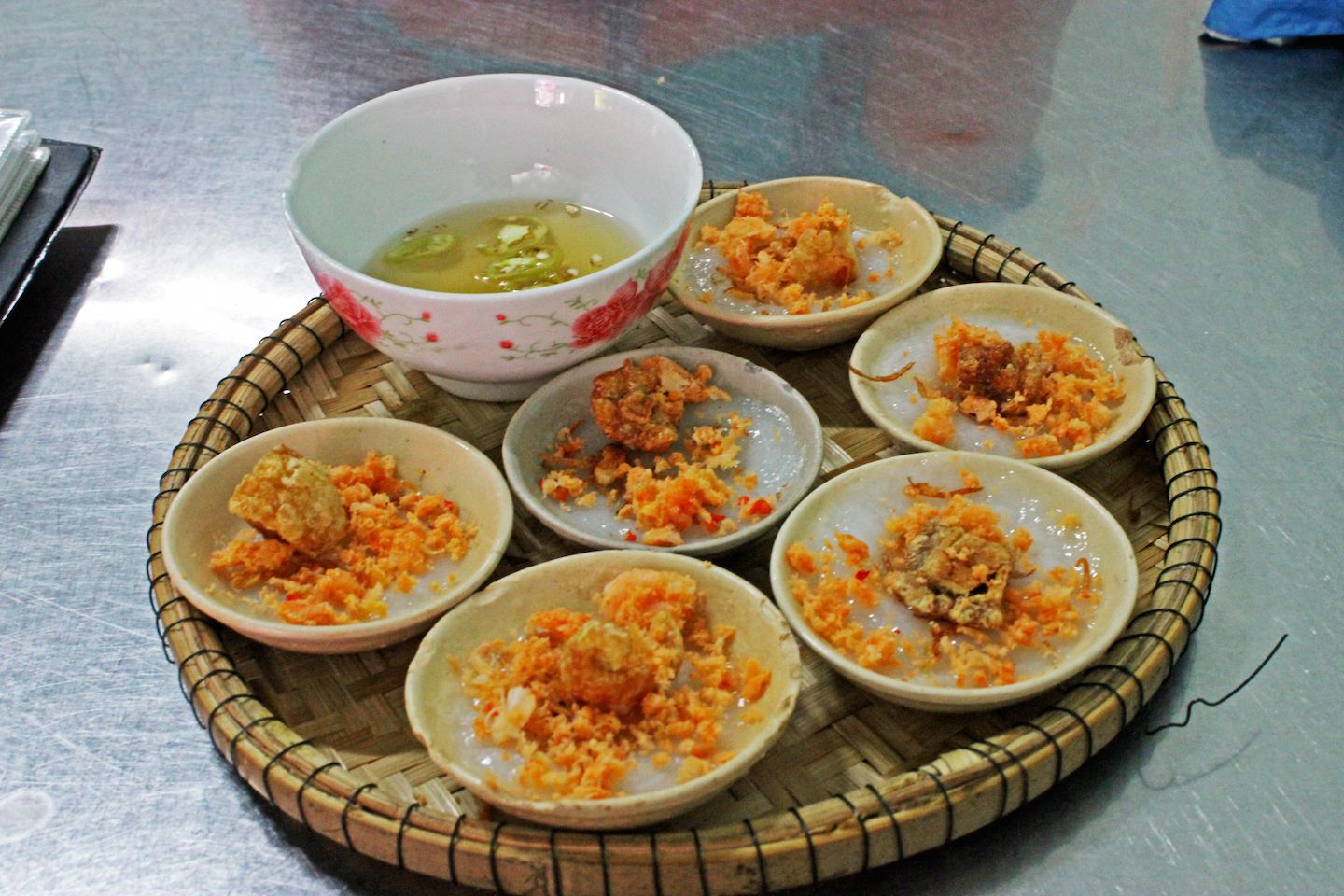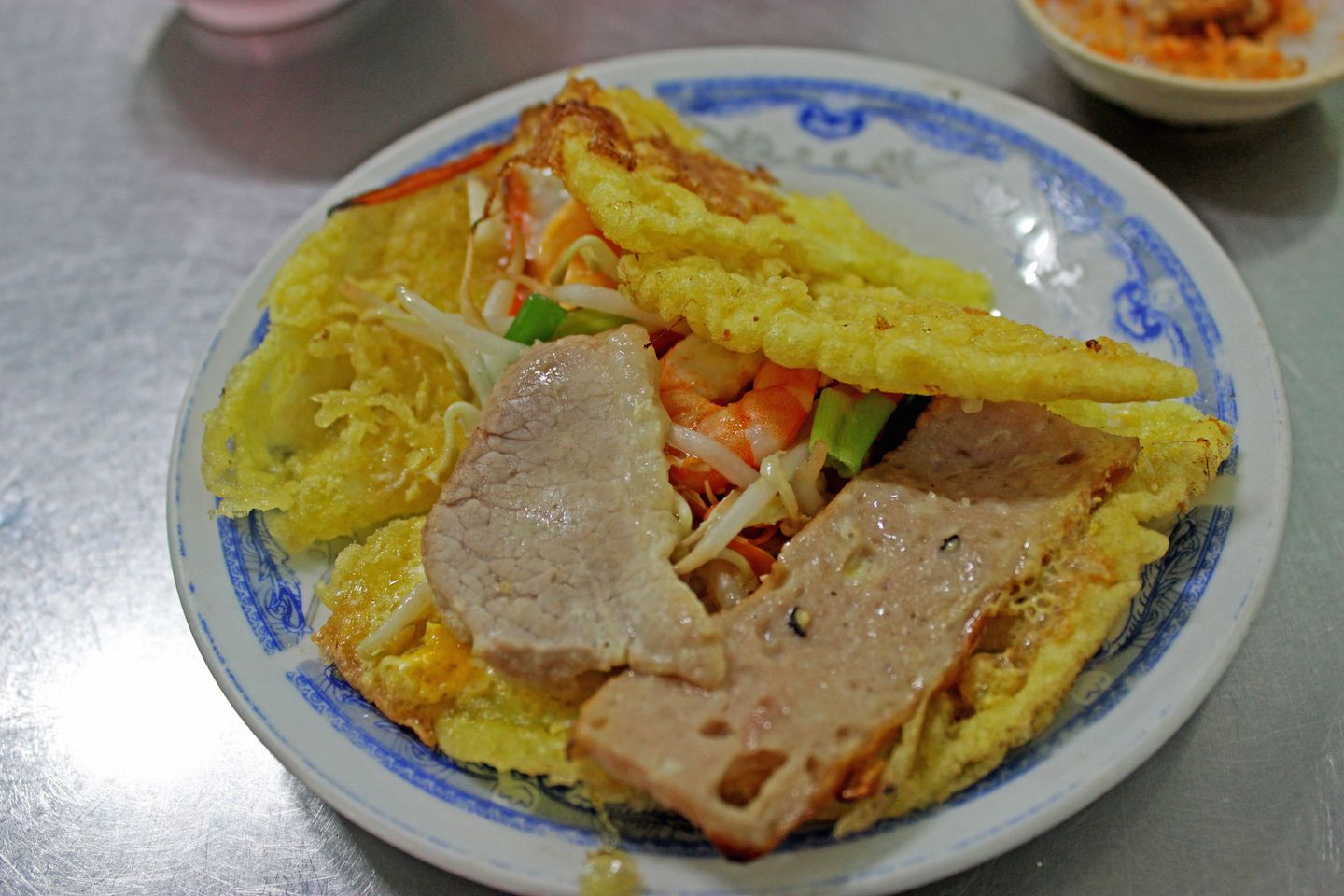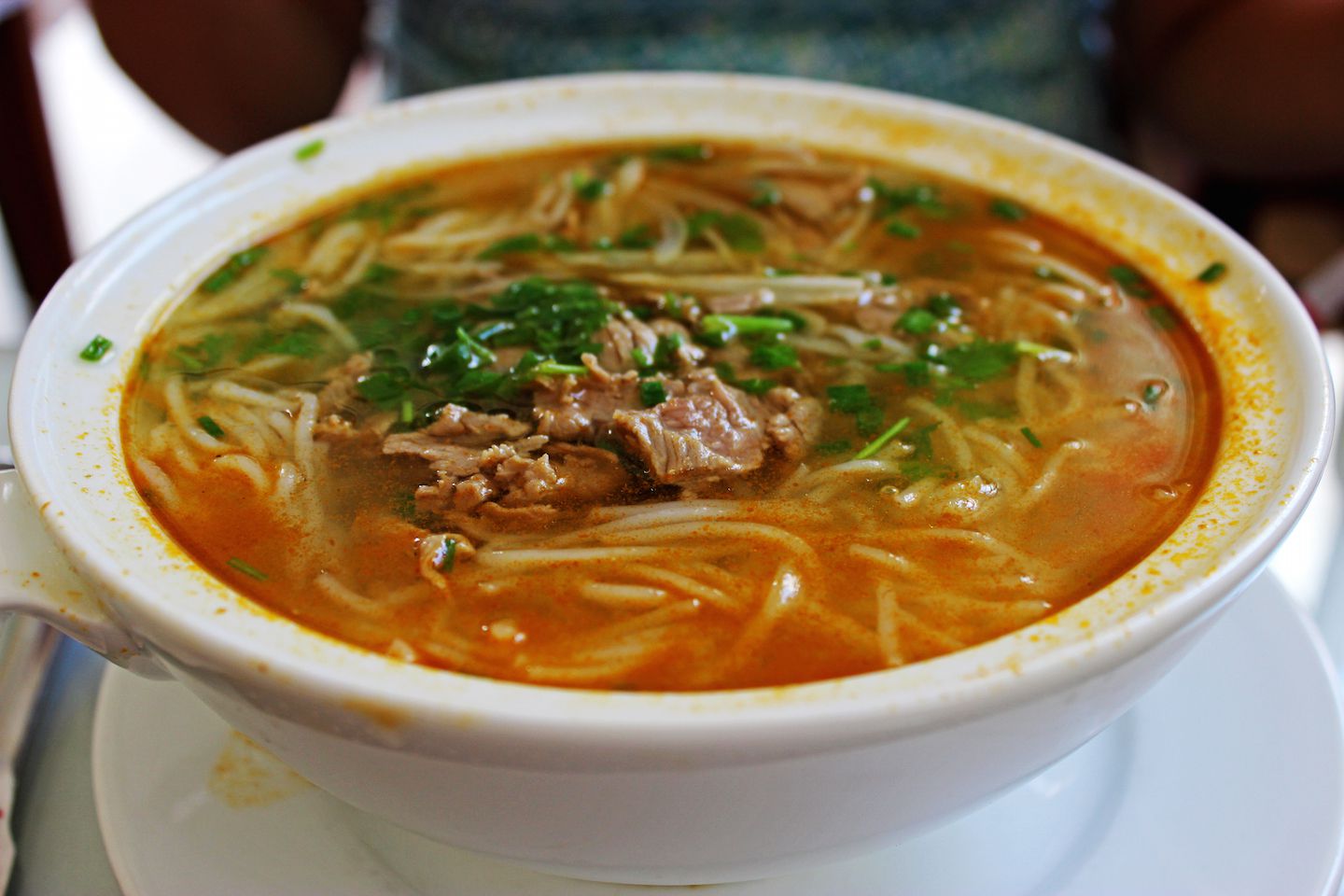Being the old capital of Vietnam, Hue is not only home to the Imperial Citadel and elaborate tombs, it is also home to food truly fit for an emperor. I’m not ashamed to admit that we needed to be shown how to eat some of the dishes (it’s not Chinese food anymore!), but I think we did well considering we had never even heard of some of them before.
Banh Beo
Banh beo is a small steamed rice flour cake served in mini saucers. A dimple forms in the center of each banh beo after steaming, which is filled with toppings such as dried shrimps and crispy fried shallots. And of course, if would not be Vietnamese food if it did not come with fish sauce with chilis.

Each banh beo made for a packed, albeit small, bite. I liked mine with lots of fish sauce. We had about five banh beos each. Good thing we also ordered other food because they were essentially appetizers they were so small. I would need at least 20 to 30 of them to be full.
Banh Khoai
Also known as a “Hue pancake,” banh khoai is like a really crispy open omelette. The ‘pancake batter’ is made out of rice flour; turmeric makes it yellow while carbonated water makes it super crispy. Shrimp and pork cooked with bean sprouts and scallions are added to the batter before it fully cooks.

I liked how crunchy the whole thing was, but the funnest part was putting the perfect bite together. First you put a part of the banh khoai into a separate bowl. Then you add lettuce, cucumbers, mint, cilantro, and starfruit. To top it all off, a homemade dipping sauce that tasted like hoisin sauce with beans and peanuts.

A true symphony of flavours.
Nem Lui
Nem lui are essentially meat skewers, but on stalks of lemongrass instead of a wooden stick. Ground beef and pork are formed into sausages around the lemongrass stalks and grilled. I love meat so I was pretty excited about this one.

Similar to banh khoai, nem lui required some putting together. Instead of eating the meat directly off the skewer as you would expect, you’re supposed to pull the meat off of the lemongrass stalk and onto rice paper. The same vegetables as banh khoai along with vermicelli, herbs, and pickled carrots complete the dish. The roll that’s been formed can finally be eaten after dipping into the same hoisin-based sauce.
Bun Bo Hue
It has been a culinary dream of mine to eat Bun Bo Hue in Hue. I scouted out the best ones and couldn’t wait to be impressed. Of course, whenever you have such high expectations, life finds a way to disappoint you and bring you back down to earth. Because we went sightseeing in the morning, by the time I got to the best street vendors, they had already sold out for the day. Darn it! So I settled for other restaurants in the city.

For my first bun bo hue in Hue, life surprised me once again. I guess I had the expectation that it would be similar to the ones I’ve had before, which of course, thinking back on it now, was silly. When my first bun bo hue was brought to me, I thought it looked just like a regular pho bowl that was a bit red in the soup here and there. However, it did taste equally flavourful and spicy as the ones I’ve had before. I guess it goes along with the trend in SE Asia where soups are kept clear and light.

I had a second one at another restaurant just to make sure. Again, it was just a little bit red, but still spicy and yummy. Yay to checking another dish off the list!
Thus concludes our adventures in Hue, both historical and food-wise. While it wasn’t our favourite city in Vietnam, we were glad to have stopped by for a few days. From Hue, we continued down to Hoi An!

